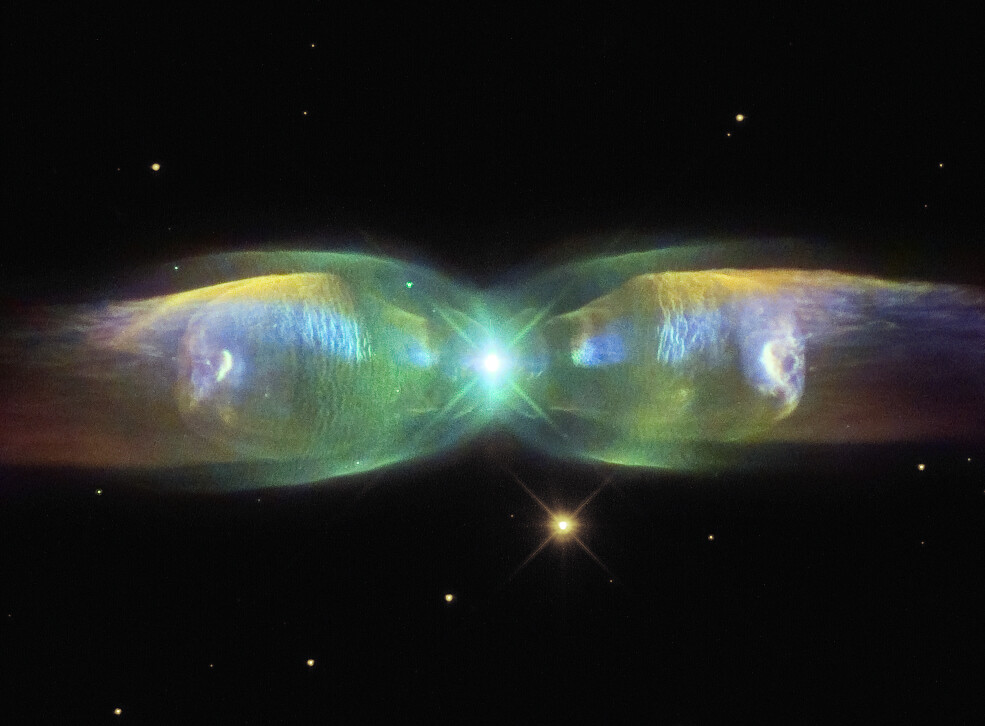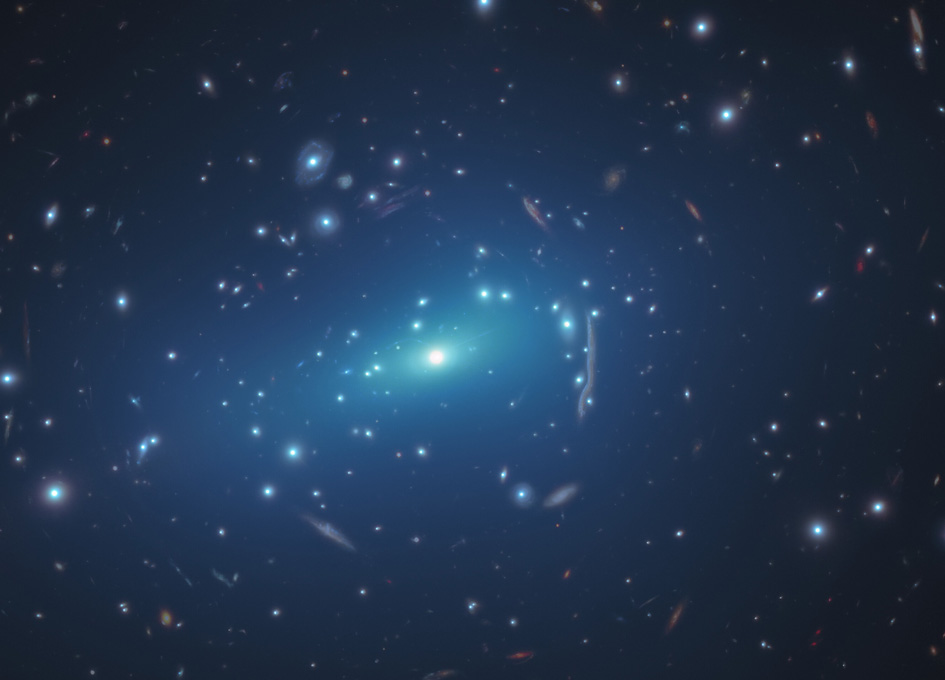Blog
Memorial
Born in Bellharbour in 1924 (died 9-9-2020), Chris is regarded as a legendary concertina player. Over his near nine decade music career, he has been acknowledged with many prestigious accolades including the TG4 Grádam Saoil award for lifetime achievement; a CCÉ Bardic Award, a Teastas award, the Clare Person of the Year Award in 2012 and the 2018 MÓRglór award.
From 1956 onwards, he would become a ten-time senior All-Ireland concertina champion, nine of which were solo efforts and one included a duet with fiddler Gus Tierney. Droney travelled the country and the world playing music. He played alongside the Bell Harbour Céilí Band, the Kilfenora Céilí Band, the Ballinakill Céilí Band, Augrim Slopes and the Kincora Céilí Band throughout his career. He also released three solo recordings, The Flowing Tide, (1962), The Fertile Rock, (1995) and Down From Bell Harbour, (2005).
more...In the case of low-mass stars like our Sun and M2-9 pictured here, the stars transform themselves from normal stars to white dwarfs by casting off their outer gaseous envelopes. The expended gas frequently forms an impressive display called a planetary nebula that fades gradually over thousands of years. M2-9, a butterfly planetary nebula 2100 light-years away shown in representative colors, has wings that tell a strange but incomplete tale. In the center, two stars orbit inside a gaseous disk 10 times the orbit of Pluto. The expelled envelope of the dying star breaks out from the disk creating the bipolar appearance. Much remains unknown about the physical processes that cause and shape planetary nebulae.

Tony Russell “Charles” Brown (September 13, 1922 – January 21, 1999) was an American blues singer and pianist whose soft-toned, slow-paced blues-club style influenced blues performance in the 1940s and 1950s. Between 1949 and 1952, Brown had seven Top 10 hits in the U.S. BillboardR&B chart. His best-selling recordings included “Driftin’ Blues” and “Merry Christmas Baby“.
Brown was born in Texas City, Texas. As a child he loved music and received classical music training on the piano. He graduated from Central High School in Galveston, Texas, in 1939 and Prairie View A&M College in 1942 with a degree in chemistry. He then became a chemistry teacher at George Washington Carver High School in Baytown, Texas, a mustard gas worker at the Pine Bluff Arsenal at Pine Bluff, Arkansas, and an apprentice electrician at a shipyard in Richmond, California, before settling in Los Angeles in 1943.
more...Leon Brown “Chu” Berry (September 13, 1908 – October 30, 1941) was an American jazz tenor saxophonist during the 1930s.
According to music critic Gary Giddins, musicians called him “Chu” either because he chewed on the mouthpiece of his saxophone or because he had a Fu Manchu mustache.
Berry was born in Wheeling, West Virginia. He graduated from Lincoln High School, in Wheeling, then attended West Virginia State College for three years. His sister Ann played piano. Berry became interested in music at an early age, playing alto saxophone, at first with local bands. He was inspired to take up the tenor saxophone after hearing Coleman Hawkins on tour.
Most of Berry’s career was spent with swing bands: Sammy Stewart, 1929–1930, with whom he switched to tenor sax, Benny Carter, 1932–1933, Teddy Hill, 1933–1935, Fletcher Henderson, 1935–1937, Cab Calloway, his best-known affiliation, from 1937 to 1941.
more...William Smith Monroe (/mənˈroʊ/; September 13, 1911 – September 9, 1996) was an American mandolinist, singer, and songwriter, who created the style of music known as bluegrass. Because of this, he is often called the “Father of Bluegrass“.
The genre takes its name from his band, the Blue Grass Boys, who named their group for the Kentucky bluegrass of Monroe’s home state of Kentucky. Monroe’s performing career spanned 69 years as a singer, instrumentalist, composer and bandleader.
Monroe was born on his family’s farm near Rosine, Kentucky, the youngest of eight children of James Buchanan “Buck” and Malissa (Vandiver) Monroe. His mother and her brother, Pendleton “Pen” Vandiver, were both musically talented, and Monroe and his family grew up playing and singing at home. Bill was of Scottish and English heritage. Because his older brothers Birch and Charlie already played the fiddle and guitar, Bill Monroe was resigned to playing the less desirable mandolin. He recalled that his brothers insisted he should remove four of the mandolin’s eight strings so he would not play too loudly.
more...Arnold Schoenberg or Schönberg (/ˈʃɜːrnbɜːrɡ/, US also /ˈʃoʊn-/; German: [ˈʃøːnbɛɐ̯k] (![]() listen); 13 September 1874 – 13 July 1951) was an Austrian-born composer, music theorist, teacher, writer, and painter. He is widely considered one of the most influential composers of the 20th century. He was associated with the expressionist movement in German poetry and art, and leader of the Second Viennese School. With the rise of the Nazi Party, Schoenberg’s works were labeled degenerate music, because they were modernist and atonal. He emigrated to the United States in 1933, becoming an American citizen in 1941.
listen); 13 September 1874 – 13 July 1951) was an Austrian-born composer, music theorist, teacher, writer, and painter. He is widely considered one of the most influential composers of the 20th century. He was associated with the expressionist movement in German poetry and art, and leader of the Second Viennese School. With the rise of the Nazi Party, Schoenberg’s works were labeled degenerate music, because they were modernist and atonal. He emigrated to the United States in 1933, becoming an American citizen in 1941.
Schoenberg’s approach, bοth in terms of harmony and development, has shaped much of the 20th-century musical thought. Many European and American composers from at least three generations have consciously extended his thinking, whereas others have passionately reacted against it.
Schoenberg was known early in his career for simultaneously extending the traditionally opposed German Romantic styles of Brahms and Wagner. Later, his name would come to personify innovations in atonality (although Schoenberg himself detested that term) that would become the most polemical feature of 20th-century art music. In the 1920s, Schoenberg developed the twelve-tone technique, an influential compositional method of manipulating an ordered series of all twelve notes in the chromatic scale. He also coined the term developing variation and was the first modern composer to embrace ways of developing motifs without resorting to the dominance of a centralized melodic idea.
more...KINGSTON, Jamaica — Legendary reggae singer Frederick “Toots” Hibbert died at the University Hospital of the West Indies in St Andrew on Friday evening. He was 77.
The singer had been admitted at the hospital last week Monday and was in a medically induced coma.
Claude Mills, Hibbert’s publicist, confirmed the singer’s passing.
“Jamaica has lost a great cultural icon. The soul of an age has died,” he told OBSERVER ONLINE.
“The family is asking for privacy at this time as they are going through a very difficult period. Toots was the patriarch of the family. He was everything to his family. I spoke to his daughter, Jenieve Bailey, who confirmed that her father had indeed passed this evening,” he continued.
Hibbert was one of the 10 finalists in the recently concluded Jamaica Festival Song Competition — a contest he won three times.
He recently released his latest album, Got To Be Tough, on August 28.
Formed in the 1960s, his band Toots and the Maytals helped popularise reggae music. The group’s 1968 single Do The Reggay was the first song to use the word “reggae” naming the genre and introducing it to a global audience.
The group’s popular songs include Monkey Man, Sweet And Dandy, Bam Bam, and Pomps And Pride.
In 2005, the group won the Grammy Award for Best Reggae Album with True Love. Seven years later, he was awarded an Order of Distinction for his contribution to Jamaica’s music.
In December 2019, he received a Jamaica Observer Entertainment Award for his efforts in taking reggae global.
more...This NASA/ESA Hubble Space Telescope image shows the massive galaxy cluster MACSJ 1206. Embedded within the cluster are the distorted images of distant background galaxies, seen as arcs and smeared features. These distortions are caused by the dark matter in the cluster, whose gravity bends and magnifies the light from faraway galaxies, an effect called gravitational lensing. This phenomenon allows astronomers to study remote galaxies that would otherwise be too faint to see. Overlaid on the image are small-scale concentrations of dark matter (represented in this artist’s impression in blue). Dark matter is the invisible glue that keeps stars bound together inside a galaxy and makes up the bulk of the matter in the Universe. These blue halos reflect how the galaxy cluster’s dark matter is distributed, revealed by new results from the Hubble Space Telescope. This was accomplished by a team of astronomers by measuring the amount of gravitational lensing. Credit: NASA, ESA, G. Caminha (University of Groningen), M. Meneghetti (Observatory of Astrophysics and Space Science of Bologna), P. Natarajan (Yale University), the CLASH team, and M. Kornmesser (ESA/Hubble)

Neil Ellwood Peart OC (/pɪərt/; September 12, 1952 – January 7, 2020) was a Canadian musician, songwriter, and author, best known as the drummer and primary lyricist of the rock band Rush. Peart earned numerous awards for his musical performances, including an induction into the Modern Drummer Readers Poll Hall of Fame in 1983, making him the youngest person ever so honoured. His drumming was renowned for its technical proficiency and his live performances for their exacting nature and stamina.
Peart was born in Hamilton, Ontario, and grew up in Port Dalhousie (now part of St. Catharines). During adolescence, he floated between regional bands in pursuit of a career as a full-time drummer. After a discouraging stint in England to concentrate on his music, Peart returned home, where he joined Rush, a Toronto band, in mid-1974, six years after its formation. They released nineteen studio albums, with ten exceeding a million copies sold in the United States. Billboard ranks the band third for the “most consecutive gold or platinum albums by a rock band”. Early in his career, Peart’s performance style was deeply rooted in hard rock. He drew most of his inspiration from drummers such as Keith Moon, Ginger Baker, and John Bonham, players who were at the forefront of the British hard rock scene. As time passed, he began to emulate jazz and big bandmusicians Gene Krupa and Buddy Rich. In 1994, Peart became a friend and pupil of jazz instructor Freddie Gruber. It was during this time that Peart decided to revamp his playing style by incorporating jazz and swing components.
In addition to serving as Rush’s primary lyricist, Peart published several memoirs about his travels. His lyrics for Rush addressed universal themes and diverse subjects including science fiction, fantasy, and philosophy, as well as secular, humanitarian, and libertarian themes. Peart wrote a total of seven nonfiction books focused on his travels and personal stories.
On December 7, 2015, Peart announced his retirement from music in an interview with Drumhead Magazine, though bandmate Geddy Leeinsisted Peart was quoted out of context, and suggested Peart was “simply taking a break”. However, in January 2018, bandmate Alex Lifesonconfirmed that Rush was retiring due to Peart’s health issues. During his last years Peart lived in Santa Monica, California with his wife, Carrie Nuttall, and daughter. After a three and a half year illness, Peart died of glioblastoma on January 7, 2020, at age 67.
more...Maria Muldaur (born September 12, 1943) is an American folk and blues singer who was part of the American folk music revival in the early 1960s. She recorded the 1973 hit song “Midnight at the Oasis” and continues to record albums in the folk traditions. She was the wife of musician Geoff Muldaur and is the mother of singer-songwriter Jenni Muldaur. Muldaur was born Maria Grazia Rosa Domenica D’Amato in Greenwich Village, New York City, where she attended Hunter College High School. Muldaur began her career in the early 1960s as Maria D’Amato, performing with John Sebastian, David Grisman, and Stefan Grossman as a member of the Even Dozen Jug Band. She then joined Jim Kweskin & the Jug Band as a featured vocalist and occasional violinist. During this time, she was part of the Greenwich Village scene that included Bob Dylan, and some of her recollections of the period, particularly with respect to Dylan, appear in Martin Scorsese‘s 2005 documentary film No Direction Home.
more...“Papa” John DeFrancesco (born September 12, 1940 Philadelphia, PA) is an American jazz organist and vocalist, and father of Joey DeFrancesco and Johnny DeFrancesco.
more...William Alonzo “Cat” Anderson (September 12, 1916 – April 29, 1981) was an American jazz trumpeter known for his long period as a member of Duke Ellington‘s orchestra and for his wide range, especially his ability to play in the altissimo register.
Born in Greenville, South Carolina, Anderson lost both parents when he was four years old, and was sent to live at the Jenkins Orphanage in Charleston, where he learned to play trumpet. Classmates gave him the nickname “Cat” (which he used all his life) based on his fighting style. He toured and made his first recording with the Carolina Cotton Pickers, a small group based at the orphanage. After leaving the Cotton Pickers, Anderson played with guitarist Hartley Toots, Claude Hopkins‘ big band, Doc Wheeler’s Sunset Orchestra (1938–1942), with whom he also recorded, Lucky Millinder, the Erskine Hawkins Orchestra, Sabby Lewis‘s Orchestra, and Lionel Hampton, with whom he recorded the classic “Flying Home No. 2”.
more...More Posts
- Daily Roots Dennis Walks
- Wayne Shorter Memorial
- Cosmos RCW 86
- Willie Chambers
- Robyn Hitchcock
- Jimmy Garrison
- Doc Watson
- Flamenco Fridays Camaron
- Daily Roots Pluto Shervington
- ECHOES OF FREEDOM Bob Marley
- Cosmos NGC 3169/66
- Lou Reed
- Larry Carlton
- Eddie “Lockjaw” Davis
- Papa Lightfoot
- World Music The Last Yiddish Tango
- Daily Roots Lloyd Robinson
- Cosmos IC 405
- Burning Spear
- Ralph Towner

